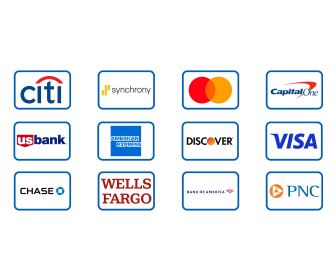The Hidden Credit Card Fees You’re Probably Paying
Credit cards promise rewards, cash-back, and convenience — but behind the perks, there are often sneaky fees quietly eating away at your money. The frustrating part? Most people don’t even realize they’re paying them. Here’s a breakdown of the hidden charges that may be draining your wallet and how to avoid them.
1. Foreign Transaction Fees
Ever shopped on an international website or used your card abroad? Many issuers still charge around 1%–3% per transaction just for currency conversion. Even digital-only brands like PayPal or Booking.com may trigger this if their billing system runs outside the U.S.
How to avoid it: Choose a card with no foreign transaction fees. Travel-focused cards (Chase Sapphire Preferred®, Capital One Venture®, etc.) typically waive them entirely.
2. Late Payment Fees
Missing a payment — even by a single day — can cost you up to $35–$40. Worse, it can trigger a “penalty APR,” jacking up your interest rate to over 29% until you re-establish a positive history.
How to avoid it: Set up automatic payments for at least the minimum due. Most banks let you schedule auto-pay directly in the app or web portal.
3. Balance Transfer Fees
Balance transfer offers look attractive with “0% APR for 12–18 months,” but they usually come with a 3%–5% transfer fee upfront. Move $5,000 of debt and that’s a $150–$250 hit right away.
How to avoid it: Check for promotions labeled “no balance transfer fee”. Some issuers (like select U.S. Bank or Navy Federal offers) occasionally waive this charge for new accounts.
4. Cash Advance Fees
Withdrawing cash from an ATM using your credit card? That’s a trap. You’ll typically pay a cash-advance fee of 3%–5% plus immediate interest — no grace period. The APR on cash advances often exceeds 28%+.
How to avoid it: Use a debit card for cash and a credit card only for purchases. Never use your credit card to send money or withdraw from ATMs unless it’s an absolute emergency.
5. Over-Limit Fees
If you’ve opted-in to allow over-limit transactions, your issuer may approve a charge that exceeds your credit line — and then bill you a $25–$35 fee for the “favor.” Many users don’t realize this opt-in exists.
How to avoid it: Opt out of over-limit permissions in your online account settings. It’s better to have a transaction declined than to pay a fee for spending one dollar too much.
6. Returned Payment Fees
If your payment bounces (for example, due to insufficient funds in your bank account), most issuers charge a $25–$40 returned-payment fee on top of any late fee. It’s a double penalty.
How to avoid it: Keep a small buffer in your checking account or link an overdraft line of credit to prevent failed payments.
7. Dormancy or Inactivity Fees
Some lesser-known or store-branded cards may charge you for “inactivity” after a long period of non-use — typically 12 months or more. While rare, it happens with sub-prime or secured cards.
How to avoid it: Make a small recurring charge (like a streaming subscription) and pay it off automatically. This keeps the card active and also helps your credit utilization ratio.
8. Annual Fees That Sneak Up
Some premium cards with big perks are worth their annual fee — but only if you actually use the benefits. If not, that $95, $250, or even $550 charge is dead weight.
How to avoid it: Review your statements yearly. If the rewards no longer justify the cost, ask for a downgrade to a no-annual-fee version instead of canceling (this preserves your credit history).
Quick tip: Most credit card fees are avoidable — but only if you know they exist. Read your card’s Schumer Box or pricing disclosure. It’s not fun reading, but it’s where every fee hides in plain sight.
Final Thoughts
Credit cards aren’t traps by default — they’re just tools with fine print. By spotting the hidden fees early, you can keep every dollar of your rewards instead of giving it back in penalties. The key: awareness and consistent payment discipline.
Not financial advice. Terms, fees, and interest rates vary by issuer and credit profile. Always review your own card’s terms before applying or using advanced features like balance transfers or cash advances.
Continue reading: Why Your Credit Score Still Sucks · Top 5 Cards to Grab Before 2026



